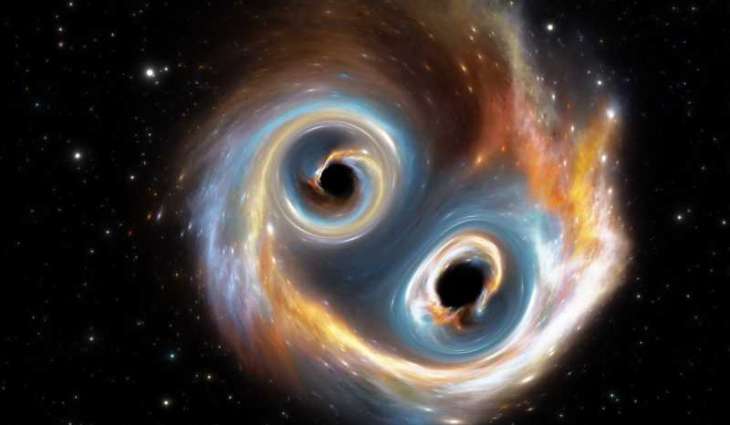HELSINKI, (Pakistan Point News - 12th Oct, 2025) In a historic observation, scientists have recorded the first-ever radio image in which two supermassive black holes can be seen clearly orbiting each other within a distant quasar named OJ 287.
The image, released by an international research team, revealed a pair of supermassive black holes locked in a cosmic dance, situated within a bright quasar known as OJ287, located about 5 billion light-years away in the constellation Cancer. Quasars are regions at the hearts of galaxies where the extreme, violent conditions around supermassive black holes cause gas and dust to heat up and glow brightly.
Researchers said the findings offered the clearest evidence yet that binary black holes, essentially two gravitational titans bound together, truly exist.
"Quasar OJ287 is so bright that it can be detected even by amateur astronomers with private telescopes," study lead author Mauri Valtonen, an astronomer at the University of Turku, Finland, said in a statement.
While astronomers have previously imaged individual black holes, such as those at the centres of the Milky Way and Messier 87, this marks the first time two have been seen orbiting together. Earlier gravitational-wave detections hinted at such pairs, but OJ 287’s black holes had never been resolved visually because existing telescopes lacked sufficient resolution.
The breakthrough came from radio observations combining Earth-based telescopes with the RadioAstron (Spektr-R) satellite, whose orbit extended halfway to the moon, giving astronomers a view roughly 100,000 times sharper than typical optical images.
When researchers compared the new radio image with past theoretical calculations, "the two black holes were there in the image, just where they were expected to be," Valtonen stated.
"The black holes themselves are perfectly black, but they can be detected by these particle jets or by the glowing gas surrounding the hole," he added.
The images also revealed the jet from the smaller of the two black holes to be "twisted like a jet of a rotating garden hose," caused by its rapid motion around the larger one. The researchers said the jet will seem to wag back and forth like a cosmic tail as the smaller black hole continues its 12-year orbit, offering a rare opportunity to watch its motion evolve in real time.




